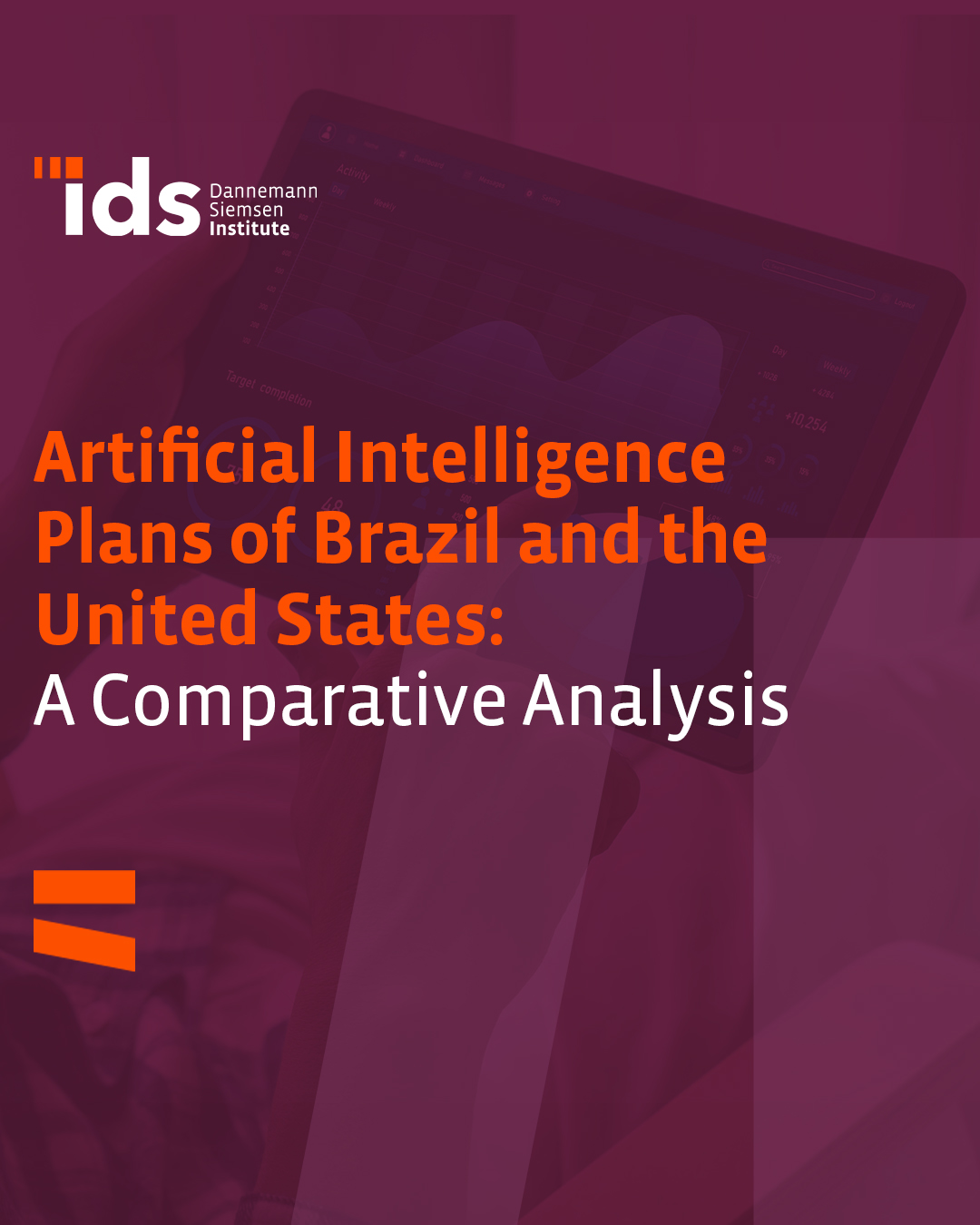29 de julho de 2025
Share
Artificial Intelligence Plans of Brazil and the United States: A Comparative Analysis
Given the growing importance of artificial intelligence on the global stage, Brazil and the United States launched national plans in 2025 outlining guidelines for the development and strategic use of the technology. While both countries share goals such as innovation and the responsible use of artificial intelligence (AI), their approaches reflect distinct priorities and visions.
On June 12, 2025, Brazil launched the Brazilian Artificial Intelligence Plan (PBIA), coordinated by the Ministry of Science, Technology and Innovation (MCTI), with support from the Center for Management and Strategic Studies (CGEE). Its objective is to promote the development and use of AI to address national challenges, ensuring individual and collective rights, social inclusion, the defense of democracy, national sovereignty, and sustainable economic development.
On July 23, 2025, the United States released the America’s AI Action Plan, presented by the White House. The plan sets goals for the federal government and articulates policy recommendations aimed at realizing the presidential vision of global dominance in AI. It is described as a roadmap to win the AI race.
The PBIA is a strategic initiative of the Brazilian federal government, characterized as a set of guiding public policy directives that serve as a framework for planning and promotion. Democratic and inclusive in nature, it aims to ensure that AI and its innovations benefit society as a whole, with a strong focus on education, ethics, and public policy. The plan also seeks to position Brazil as a global AI leader, promoting technological development with sovereignty and international capacity-sharing. It proposes “AI for the good of all,” with solutions developed by Brazilians, for Brazilians, respecting the country’s unique characteristics and leveraging its competitive advantages, such as its predominantly clean energy matrix. The plan is structured into five action areas: infrastructure and development, education and training, public services, business innovation, and regulation.
The America’s AI Action Plan is a strategic plan designed to ensure the United States’ global technological dominance in artificial intelligence, treating AI as a national security priority. Although also a set of public policy guidelines, it carries a strong strategic and geopolitical orientation, guiding concrete federal actions. The plan aims for global leadership, focusing on defense, infrastructure, and technological competition. It is built around three pillars: innovation, infrastructure, and leadership in international diplomacy and security.
The Brazilian and U.S. plans share several key points of convergence. Chief among them is the focus on innovation and research and development (R&D). Brazil has allocated R$ 23 billion (from various sources such as public funds, credit, and private investment contributions) through 2028 to strengthen infrastructure, training, and AI research. The U.S. also places innovation at the center of its strategy, accelerating technological advancement and removing barriers for the private sector. The American plan encourages AI innovation to be led by the private sector, with the federal government providing the conditions to support it. Both plans emphasize the importance of ensuring the safe and responsible use of AI without stifling innovation. Improving the efficiency of public services through AI is also a goal highlighted by both countries.
In the area of education and AI training, both plans show commitment, though their approaches differ. Brazil adopts a broader approach to education and capacity building at all levels, emphasizing social inclusion and technological sovereignty. The U.S., while also promoting AI education from early childhood and across society, focuses more heavily on technological leadership and specialized technical training for high-value jobs.
On the other hand, the AI plans of Brazil and the United States reveal strategic differences. Brazil emphasizes “AI for the good of all” and technological sovereignty, aiming to develop local solutions to national challenges—including through public-private and international partnerships—to improve the lives of Brazilians. The U.S., by contrast, targets global technological leadership in AI, promoting rapid innovation through the private sector to reshape the global balance of power.
U.S. AI policy discourages heavy-handed or excessive regulation that might hinder industry development, supporting open-source and open-weight practices in AI systems development. In contrast, one of Brazil’s core action areas includes support for the national AI regulatory process.
In terms of infrastructure and energy, Brazil leverages its predominantly clean and renewable energy matrix to foster sustainable AI development aligned with global emission-reduction goals. The U.S., meanwhile, prioritizes the rapid construction of expansive AI infrastructure and significantly increased energy generation, streamlining licensing and rejecting what it calls “radical climate dogma” to meet growing demand.
The two plans also diverge significantly on issues of national security and defense. The U.S. treats AI as a critical tool for achieving global technological dominance, with a focus on military superiority and strategic export to allies. Brazil, on the other hand, takes a sovereignty-oriented approach. The PBIA emphasizes building internal capabilities, with a focus on information protection, government cybersecurity, and public safety enhancement, aiming to reduce external dependence.
In conclusion, despite common ground, the AI strategies of Brazil and the United States reflect distinct national priorities: Brazil emphasizes sovereignty, inclusion, and sustainability, while the U.S. prioritizes global dominance, defense, and geopolitical competition. These differences shape contrasting strategic paths in the development and application of AI.
The PBIA, in Portuguese, can be accessed at the following link: https://www.gov.br/mcti/pt-br/acompanhe-o-mcti/noticias/2025/06/publicada-versao-final-do-plano-brasileiro-de-inteligencia-artificial-sob-coordenacao-do-mcti
The America’s AI Action Plan can be accessed at the following link: https://www.whitehouse.gov/wp-content/uploads/2025/07/Americas-AI-Action-Plan.pdf
Note: For quick release, this English version is provided by automated translation without human review.
